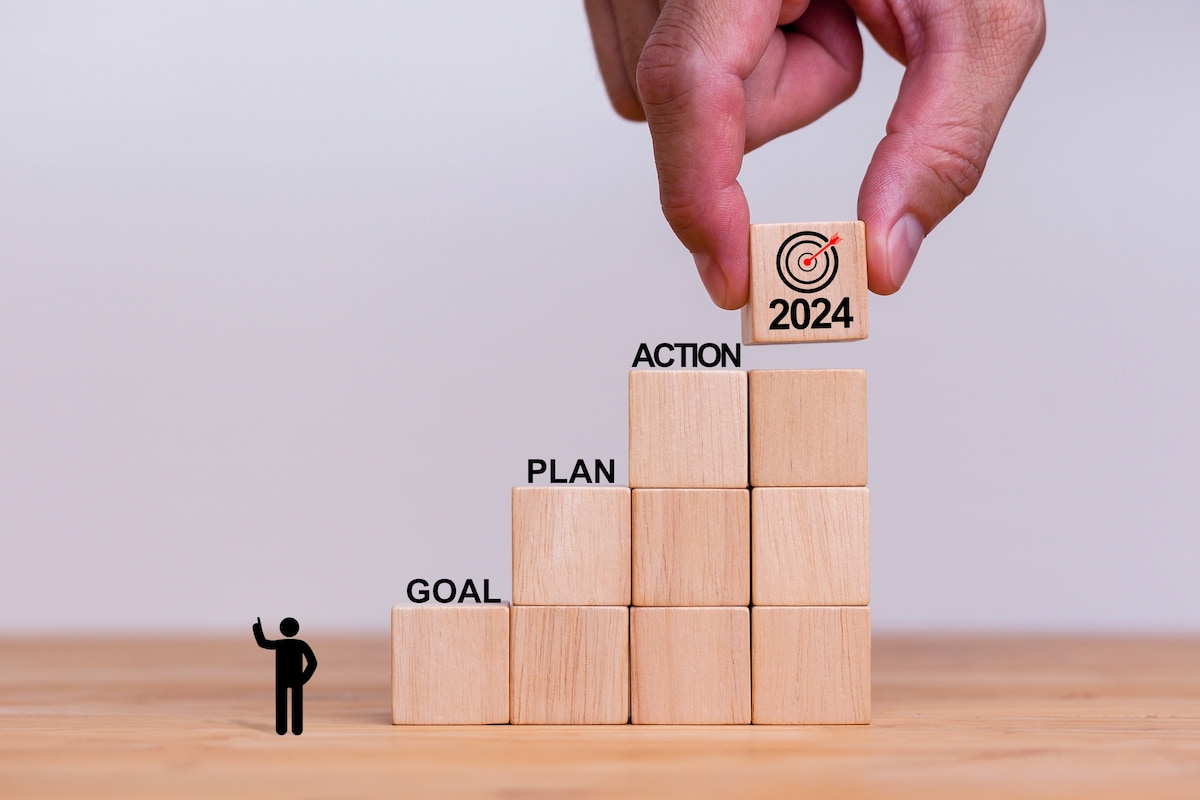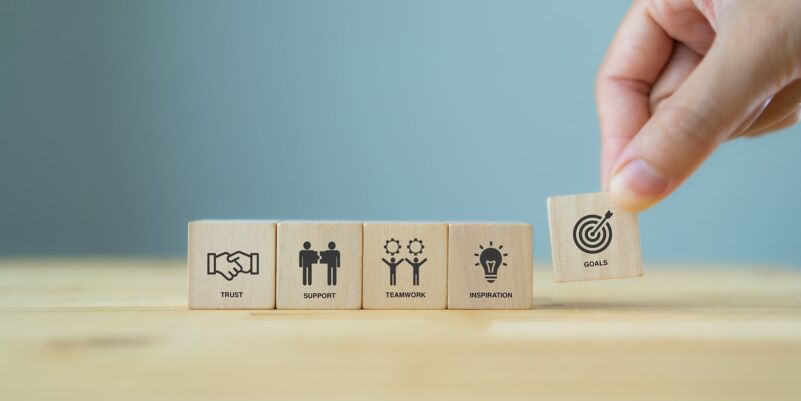In our business coaching practice, we lean on two tools that most businesses don’t even think to use—retrospectives and premortems. They’re absolute staples in agile software development, but when you pull them into broader business contexts, they deliver something most teams desperately need—real insights and forward-thinking strategies. Think agile principles but without the jargon and buzzwords. The result? Better decisions, sharper execution, and fewer “what the hell just happened?” moments.
Now, maybe this idea is brand new to you, or maybe you’ve already tried retrospectives and walked away unimpressed. If your company’s retrospectives are flopping and failing to produce anything actionable, you’re not alone. I see the same problem all the time—teams get so bogged down dissecting the past that they completely forget to plan for the future.
What’s left? A giant moanfest where everyone complains, nobody takes ownership, and the whole team leaves feeling like crap. Sound familiar?
If so, it’s time to flip the script and give the 4L method a shot. This no-BS framework cuts through the noise and gets your team talking about what actually matters—what they liked (or loved), learned, lacked (or loathed), and longed for. It’s straightforward, brutally honest, and, most importantly, action-oriented.
By using the 4L framework, you can turn those dead-end discussions into something useful—real actions, measurable improvements, and a team that’s actually learning and growing.
Let’s break down how the 4L Approach can take your retrospectives from soul-crushing vent sessions to powerful tools for progress.
Dive Deep with the 4Ls: The 4L retrospective framework (Liked (sometimes written as Loved), Learned, Lacked (sometimes seen as Loatheed), Longed for) provides an easy and repeatable structure for continuous team improvement by covering wins, lessons, deficits, and aspirations. You pick the Ls that work best in your culture.
Cultivate Transparency: Creating a safe space (developing psychological safety) is crucial for honest reflections during retrospectives, with a skilled facilitator and the correct tools and materials guiding the process towards constructive outcomes.
Turn Reflections into Tangible Improvements: The very essence of a retrospective must be to catalyse action—prioritise objective feedback, create actionable plans with clear goals, and establish accountability to ensure consistent team progress and learning.
Exploring the 4Ls Retrospective Framework

The 4Ls Retrospective: More Than Reflection: Designed by Mary Gorman and Ellen Gottesdiener, this agile technique helps teams critically analyse their sprint experiences, focusing on successes, failures, and areas for growth. Its straightforward yet effective approach aids agile teams in extracting valuable lessons from each sprint or OKR review session, fostering continuous performance enhancement.
What Makes the 4Ls Retrospective Stand Out?
Unlike other retrospective techniques, the 4Ls framework zeroes in on four simple but powerful areas:
- Liked – What did the team actually enjoy about the project or process? What worked well and should be repeated?
- Learned – What lessons, insights, or “aha” moments came out of the experience?
- Lacked – Where did the team feel shortchanged? What resources, skills, or support were missing?
- Longed For – What did the team wish had been different? What goals or improvements are still on the wishlist?
By framing the discussion around these specific areas, the 4Ls method forces teams to reflect from multiple angles—good, bad, and everything in between. It’s not just about what went wrong (or right); it’s about digging into what needs to change and what’s worth keeping.
But—and this is a big “but”—what works like magic for one team might feel like nails on a chalkboard for another. That’s why this method isn’t just about asking the right questions; it’s about creating space for honest, open conversations that let teams tailor solutions to their specific needs.
This depth of reflection is what makes the 4Ls so effective. It doesn’t just skim the surface; it gets into the guts of the process, helping teams uncover overlooked insights and identify meaningful improvements—without getting stuck in endless cycles of complaining or wishful thinking.
Creating a Safe Space for Honest Feedback
Obviously, ensuring there is a supportive environment is crucial for honest feedback during retrospectives. When team members feel safe to voice their thoughts, they share authentic insights and propose impactful improvements. Trust and open communication are essential. During a brilliant conversation on Curious Leadership with David Horsager, CEO of Trust Edge Leadership Institute (found here), we explored the very essence of trust in the workplace. Following the same theme, check out this recent blog I wrote here.
Seek to consistently enable comprehensive feedback for a deeper understanding of team experiences. Creating this safe space is the role of the team leader or manager, and if you feel this is amis under your leadership, you need to question yourself as to why that is.
How Do You Create a Safe Space for Honest Feedback?
Creating a safe space starts with setting the right tone. If people don’t feel comfortable speaking up, you’ll either get polite nonsense or complete silence—neither of which helps anyone. The goal is to make it clear from the outset that this isn’t about blame or judgment; it’s about getting better as a team.
Encouraging everyone to share their thoughts and feelings is a big part of this. Too often, the loudest voices dominate while quieter team members fade into the background. That can’t happen if you’re serious about improvement. People need to know their input is not just welcome but genuinely valued—whether it’s praise, criticism, or something that’s been bugging them for weeks.
It also helps to give each person uninterrupted time to speak. Nothing kills trust faster than getting cut off mid-sentence. Let people finish, and actually listen instead of just waiting for your turn to respond. Making sure every voice is heard isn’t just polite—it’s essential if you want real insights instead of the same recycled opinions.
When the environment feels supportive, people stop holding back. Instead of tiptoeing around issues, they talk openly about what’s working, what’s broken, and what needs to change. That’s when retrospectives stop being awkward meetings and start becoming a powerful tool for building trust, collaboration, and—most importantly—results.
Setting the Stage for Successful Retrospectives

A successful 4L retrospective is more than just a meeting—it’s a strategic chance for team growth. Getting it right takes planning, skilled facilitation, and the right tools.
The facilitator plays a central role, keeping discussions productive, ensuring all voices are heard, and driving the session toward clear outcomes. It’s a time for radical candor and new perspectives, where everyone should leave feeling heard and confident about next steps.
The right tools and materials also help capture feedback, focus on priorities, and turn insights into actions. With proper preparation and open dialogue, teams can make smarter, data-driven decisions for continuous improvement.
Choosing the Right Facilitator
The facilitator can make or break a retrospective. Their job is to guide the process, keep conversations honest yet productive, and make sure the session doesn’t derail into side tangents or finger-pointing.
So, what makes a good facilitator? It’s not just about running the meeting—it’s about creating an environment where people feel safe enough to speak up and motivated enough to act on what’s discussed. Facilitators need empathy to understand team dynamics, sharp communication skills to keep discussions on track, and the ability to give feedback without making it personal.
More importantly, a strong facilitator knows how to handle conflict without letting it hijack the session. They steer disagreements toward productive outcomes, keeping the team focused on solutions instead of problems. Done right, they don’t just run the meeting—they set the tone for growth and collaboration.

Preparing the Tools and Materials
Tools and materials are vital in a retrospective, aiding the team in collecting and structuring feedback, thus simplifying the process and task of pinpointing improvement areas and devising actionable plans.
Whether using software like Miro for managing retrospective activities or traditional tools like sticky notes, markers, and a whiteboard, the right mix of digital and physical materials is crucial. These tools help document feedback effectively and ensure shared reflections are visible and understood by all team members. Conducting the 4Ls Retrospective with Your Team
For the next and last iteration of the 4Ls retrospective, it’s essential to strike the right balance. This involves initiating and guiding discussions, fostering open and honest dialogue, and steering towards a productive and constructive outcome.
The process begins by initiating the conversation about likes and learnings, allowing the team to discuss and share their positive experiences and lessons learned. But it doesn’t end there. The retrospective technique also involves addressing the lacks and longings, ensuring that all aspects of the group or team’s performance are examined and opportunities for improvement are identified.
Initiating the Conversation: Likes and Learnings
The first step in brainstorming the 4Ls retrospective is initiating the conversation about likes and learnings. This is where team members and participants get to share what they enjoyed about the sprint and what they learned along the way. Kicking things off with positivity sets a tone for the more challenging parts of the conversation.
By starting with the positives, the team is encouraged to brainstorm ideas, reflect and think critically about their past performance, identify what worked well, and consider how these successes can be replicated in future sprints.
These learnings provide valuable knowledge and insights into how the team can improve their performance and overcome challenges in the future by implementing new ideas.
Addressing the Lacks and Longings
Following the likes and learnings, the team can then address their lacks and longings. During this part of the retro, the team shares what they felt was missing in the last sprint and what they long for in the next sprint.
Confronting areas where we can improve can be challenging but crucial for team growth. By fostering a supportive, non-judgmental space, teams can openly address these issues, transforming perceived setbacks into opportunities for development and progress.
Turn priorities into actions

The power of the 4Ls retrospective lies in its ability to transform discussions into decisive actions. Merely talking about successes and failures isn’t sufficient. Teams must use these insights to shape future actions. This involves prioritising feedback, setting actionable plans with defined deadlines, and ensuring accountability for improvements. A proactive approach enables continuous performance enhancement, learning from past sprints, and achieving better outcomes in future endeavours.
Prioritising Feedback and Formulating an Action Plan
Transforming feedback into impactful actions begins with prioritisation. The team can target improvements that significantly boost performance by zeroing in on the most crucial issues. The next phase involves crafting a concrete action plan: setting attainable goals, delegating tasks, and establishing deadlines. This plan acts as a roadmap, guiding the team towards enhancement and clarifying the importance of each member’s role in driving collective success.
Ensuring Accountability and Follow-through
For actualising to manifest as tangible actions, accountability and follow-through are essential. An action plan without accountability remains a mere wishlist. When accountability is woven into the fabric of the team’s operations, every member becomes committed to actualising the improvements. This commitment can be solidified by assigning specific individuals to oversee each action item and employing tools like Jira, Trello, or Asana to collectively monitor progress on action items. Such a systematic approach guarantees that insights from retrospectives are translated into concrete steps, with every team member fully aware of and responsible for their part in the collective progress.
Adapting the 4Ls Retrospective for Remote Teams

Adapting the 4Ls technique for virtual teams is crucial in today’s distributed work world. This method can be as effective online as in person with the appropriate digital tools. Remote 4Ls retrospectives thrive on platforms like Miro offering online whiteboards and digital sticky notes, allowing for organised and accessible feedback. Tools like these mimic the in-person experience and offer advantages like auto-saving and effortless sharing for future reference. These digital solutions allow teams to engage in smooth, collaborative retrospectives, transcending geographical boundaries. Not all that long ago, I had a fantastic discussion on Curious Leadership with J Arthur, who shared some insights into scaling her fully remote business, which I recommend listening to if you haven’t already.
Beyond the Basic 4Ls: The Emotional Perspective in Retrospectives
Retrospectives benefit immensely from acknowledging team emotions, illuminating morale and collaboration quality. Employing tools like smiley-sad face scales or formats like ‘mad, sad, glad’ effectively tracks these feelings. Integrating emotional insights into retrospectives cultivates a supportive atmosphere, ensuring every team member feels acknowledged and valued.
Leveraging Retrospective Insights for Future Success
The 4Ls retrospective is designed to pivot from blame-laden insights to achieving future objectives. It’s about harnessing lessons from past experiences and fine-tuning strategies, thereby elevating team performance in forthcoming projects or sprints. More than just an assessment tool, these retrospectives are vital catalysts for ongoing improvement, fostering a culture of perpetual learning and growth within teams. Enhancing a growth mindset in all involved and bolstering physiological safety.
Summary
Our exploration of the 4Ls retrospective has revealed its significant impact on improving team performance and fostering continuous development. We’ve dissected its four core components, outlined methods for conducting productive retrospectives, and explored ways to convert introspective insights into concrete actions. The 4Ls retrospective is not merely a mechanism for reflection; it’s a driving force for team progression. It promotes open communication, appreciates candid feedback, and turns insights into actionable steps. Incorporating the 4Ls into your next team retrospective could be a game-changer, potentially elevating your team’s efficiency and contributing to its overall success.
Written by business coach and leadership coaching expert Dominic Monkhouse. Contact him to schedule a call here. You can order your free copy of his book, Mind Your F**king Business here.

